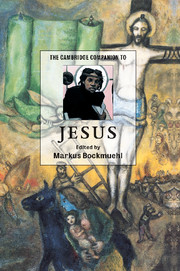5 - Friends and enemies
from Part I - The Jesus of history
Published online by Cambridge University Press: 28 May 2006
Summary
Friends and enemies have a unique power to define who we are. They locate us socially, within the world of what other people do. That localising capacity of friendship and enmity is not merely a matter of their exposing the extrinsic coordinates of who we are in terms of birth, status or education. Our relationships to friends and enemies express who we are and seek to become, as we engage or reject the kinds of behaviour, thought and feeling others represent to us.
JOHN THE BAPTIST AND HIS CIRCLE
Jesus’ relationship to John the Baptist presents the strongest case in point. Certainly the most influential figure in his life, John gave Jesus the focus on purity that, in one form or another, became an emblematic feature of his activity. Jesus did not simply meet his teacher in adulthood (as a superficial reading of the gospels would suggest), but apprenticed himself to him as a youth.
Josephus’ famous report about John in Antiquities 18.116–19 is a flashback, related to explain the opinion among ‘some Jews’ that the defeat of Antipas’ army at the hands of Aretas, the king of Nabataea, represented divine retribution for his treatment of John. What Josephus does not say, but the gospels do attest (Mark 6.18–29; Matt 14.3–12; Luke 3.19–20), is that John had criticised Antipas for marrying Herodias, who had been married to his brother Philip. Josephus’ account dovetails with the gospels, in that he gives the details of Antipas’ abortive divorce from Aretas’ daughter in order to marry Herodias (18.109–2). Josephus also explains that this was merely the initial source of the enmity with Aretas, which was later exacerbated by a border dispute that preceded the outbreak of hostilities (18.113).
- Type
- Chapter
- Information
- The Cambridge Companion to Jesus , pp. 72 - 86Publisher: Cambridge University PressPrint publication year: 2001
- 1
- Cited by



